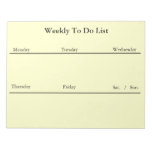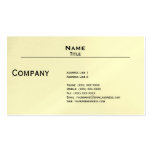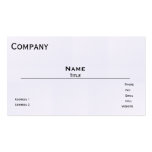So, what in the world is copywriting? And more importantly, why should you care?
In a nutshell, copywriting is writing for the sole purpose of persuading people to buy your products or services.
The problem is that most small business owners write their website and sales pages using the formula that they learned in school.
Big mistake!
Copywriting is a different animal entirely.
But, the good news is that if you learn a few key points about copywrighting, you can substantially increase your sales and small business profits.
Here are 10 important copywriting tips to keep in mind when writing marketing materials:
In copywriting, you’re not talking to the general population. Your readers will feel like you don’t understand their particular problems or situations.
Instead, your reader needs to recognize that you know exactly what is bothering them, and that you can relate. You need to talk their language.
Are they men? Women? Small business owners?
When you know exactly who you’re writing to, you can speak directly to them and their particular situation.
It’s always best to be clear and concise when writing ad-copy.
Make your writing simple and to-the-point so that your prospects immediately understand the benefits of your offer.
To help you accomplish this, there’s a nifty little tool that you can use.
It’s called the Flesch-Kincaid Reading Ease Test. It’s a formula that analyzes your writing level.
On a 1 – 100 scale, 1 is very complicated to read and 100 is very easy to read.
Most experts recommend that your writing be somewhere in the 60 – 70 range, which is fairly easy to read.
You can test out your own copywriting using the Readability Test Tool.
Oftentimes, small business owners try to be crafty and cunning when they write their copy.
This is frequently a result of the fear of appearing too “salesy.”
But, this approach rarely works. Usually, the reader ends up being completely unclear about what you’re trying to sell. And a confused prospect won’t stick around for long.
It’s important that your reader understands:
Although there are entire books written about crafting headlines, you can start with the 4-U formula originally developed by business coach Michael Masterson.
The 4-U’s outline that your headline should be urgent, unique, useful, and ultra-specific.
When you write your headline using the 4-U formula, you convince more readers to click through and actually read your article.
To create powerful headlines, your headline must:
You probably agree with Nielsen that most websites end up irritating you. This is especially true when reading ad-copy.
Whenever you frustrate your reader, for example, using super-small font, you’ve lost them.
So, how do you make your copywriting visually attractive to your reader?
Make sure to use:
When you believe in the integrity of your product or service, you’re able to make promises to your customers. Essentially, you promise that if your customer uses your product or service, they will receive a desired result.
The promise you make to your audience is also the basis of your Unique Selling Proposition (USP).
In other words, your promise is the benefit of your product or service that makes it different from your competition. It’s why your prospect should prefer your product or service over all the other choices.
So, go ahead and let your audience know exactly how your product or service will make their life better.
Active voice is strong, to the point, and gets your message across quickly and efficiently. It is when the subject of your sentence performs the action.
Passive voice weakens your message and clouds your meaning. It’s when your subject is being acted upon by the verb.
Here is an example of passive voice: “The brakes were slammed on by her as the car sped downhill.”
Do you see how that sentence is awkward, wordy, and reactive?
To change it to active voice, make sure that the subject of the sentence is performing the action: “She slammed on the brakes as the car sped downhill.”
Now the sentence is much more powerful and concise.
Avoid passive voice whenever you can.
A weasel word is one that avoids a direct command, statement, or position. These words include: try, could, perhaps, hope, may, could, perhaps, etc.
These words make you sound weak and ineffective.
Replace these weasel words with commanding and authoritative words such as can, will, and do to let your reader know exactly what your product or service can do for them.
General examples are abstract and intangible. They can’t be perceived through the five senses.
On the other hand, specific examples are sensory words, and we are able to perceive them through the five senses. Specific examples convey our ideas vividly.
General example: My mom is in a bad mood today.
Specific example: My mom rushes past me with a burnt piece of toast, grumbling at me when I say hello.
The second sentence contains sound, sight, and motion details, and allows readers to directly experience the mom’s mood.
As soon as a prospect finishes reading your ad-copy, you want them to do something while your offer is still fresh in their mind.
It doesn’t matter if they’re reading a sales page, blog post, email, or social media update, you need to include a call to action.
If you don’t specifically ask people to do something, chances are they won’t do it.
There are a number of actions that your prospect can take including:
Therefore, the next time that you are struggling to sell your products or services, take a look at your ad-copy…it could be the culprit.
In a nutshell, copywriting is writing for the sole purpose of persuading people to buy your products or services.
The problem is that most small business owners write their website and sales pages using the formula that they learned in school.
Big mistake!
Copywriting is a different animal entirely.
But, the good news is that if you learn a few key points about copywrighting, you can substantially increase your sales and small business profits.
Here are 10 important copywriting tips to keep in mind when writing marketing materials:
1. Understand your audience.
“The aim of marketing is to know and understand the customer so well the product or service fits him and sells itself.” ~ Peter DruckerIn copywriting, you’re not talking to the general population. Your readers will feel like you don’t understand their particular problems or situations.
Instead, your reader needs to recognize that you know exactly what is bothering them, and that you can relate. You need to talk their language.
Are they men? Women? Small business owners?
When you know exactly who you’re writing to, you can speak directly to them and their particular situation.
2. Keep it simple.
“The most valuable of all talents is that of never using two words when one will do.” ~ Thomas JeffersonIt’s always best to be clear and concise when writing ad-copy.
Make your writing simple and to-the-point so that your prospects immediately understand the benefits of your offer.
To help you accomplish this, there’s a nifty little tool that you can use.
It’s called the Flesch-Kincaid Reading Ease Test. It’s a formula that analyzes your writing level.
On a 1 – 100 scale, 1 is very complicated to read and 100 is very easy to read.
Most experts recommend that your writing be somewhere in the 60 – 70 range, which is fairly easy to read.
You can test out your own copywriting using the Readability Test Tool.
3. Say exactly what you mean.
“One should aim not at being possible to understand, but at being impossible to misunderstand.” ~ QuintilianOftentimes, small business owners try to be crafty and cunning when they write their copy.
This is frequently a result of the fear of appearing too “salesy.”
But, this approach rarely works. Usually, the reader ends up being completely unclear about what you’re trying to sell. And a confused prospect won’t stick around for long.
It’s important that your reader understands:
- You can relate to their urgent problem.
- The solution and how it will make their life better.
- What they need to do in order to eliminate the problem.
4. Focus on your headline.
“On the average, five times as many people read the headline as read the body copy. When you have written your headline, you have spent eighty cents out of your dollar.” ~ David OgilvyAlthough there are entire books written about crafting headlines, you can start with the 4-U formula originally developed by business coach Michael Masterson.
The 4-U’s outline that your headline should be urgent, unique, useful, and ultra-specific.
When you write your headline using the 4-U formula, you convince more readers to click through and actually read your article.
To create powerful headlines, your headline must:
- Provide a sense of urgency.
- Be incredibly useful.
- Offer something new and interesting.
- Contain simple and obvious words.
5. Make your copy visually appealing.
“It is rare to see a webpage that has any goal besides annoying the user.” ~ Jakob NielsenYou probably agree with Nielsen that most websites end up irritating you. This is especially true when reading ad-copy.
Whenever you frustrate your reader, for example, using super-small font, you’ve lost them.
So, how do you make your copywriting visually attractive to your reader?
Make sure to use:
- Bulleted lists
- Short sentences and paragraphs
- Headings and subheadings
- Readable font (Arial, Courier New, Georgia, Helvetica, Times New Roman, etc.)
- Plenty of white space
- Graphics and pictures
6. Make promises.
“Keep every promise you make and only make promises you can keep.” ~ Anthony HittWhen you believe in the integrity of your product or service, you’re able to make promises to your customers. Essentially, you promise that if your customer uses your product or service, they will receive a desired result.
The promise you make to your audience is also the basis of your Unique Selling Proposition (USP).
In other words, your promise is the benefit of your product or service that makes it different from your competition. It’s why your prospect should prefer your product or service over all the other choices.
So, go ahead and let your audience know exactly how your product or service will make their life better.
7. Use active voice.
“The active voice is more direct and vigorous than the passive. A sentence should contain no unnecessary words, a paragraph no unnecessary sentences, for the same reason that a drawing should have no unnecessary lines.” ~ William Strunk, Jr.Active voice is strong, to the point, and gets your message across quickly and efficiently. It is when the subject of your sentence performs the action.
Passive voice weakens your message and clouds your meaning. It’s when your subject is being acted upon by the verb.
Here is an example of passive voice: “The brakes were slammed on by her as the car sped downhill.”
Do you see how that sentence is awkward, wordy, and reactive?
To change it to active voice, make sure that the subject of the sentence is performing the action: “She slammed on the brakes as the car sped downhill.”
Now the sentence is much more powerful and concise.
Avoid passive voice whenever you can.
8. Replace “weasel words.”
“Style means the right word. The rest matters little.” ~ Jules RenardA weasel word is one that avoids a direct command, statement, or position. These words include: try, could, perhaps, hope, may, could, perhaps, etc.
These words make you sound weak and ineffective.
Replace these weasel words with commanding and authoritative words such as can, will, and do to let your reader know exactly what your product or service can do for them.
9. Use specific examples.
“Since so much advertising is vague and general, being specific in your copy sets it apart from other ads and creates interest.” ~ Bob BlyGeneral examples are abstract and intangible. They can’t be perceived through the five senses.
On the other hand, specific examples are sensory words, and we are able to perceive them through the five senses. Specific examples convey our ideas vividly.
General example: My mom is in a bad mood today.
Specific example: My mom rushes past me with a burnt piece of toast, grumbling at me when I say hello.
The second sentence contains sound, sight, and motion details, and allows readers to directly experience the mom’s mood.
10. Ask your reader to take action.
“If you don’t act now while it’s fresh in your mind, it will probably join the list of things you were always going to do but never quite got around to.” ~ Paul ClitheroeAs soon as a prospect finishes reading your ad-copy, you want them to do something while your offer is still fresh in their mind.
It doesn’t matter if they’re reading a sales page, blog post, email, or social media update, you need to include a call to action.
If you don’t specifically ask people to do something, chances are they won’t do it.
There are a number of actions that your prospect can take including:
- Supply you with their email address
- Call a 1-800 number
- Download a free ebook
- Make a comment on your blog
- Purchase your product or service
Therefore, the next time that you are struggling to sell your products or services, take a look at your ad-copy…it could be the culprit.
______________________







No comments:
Post a Comment